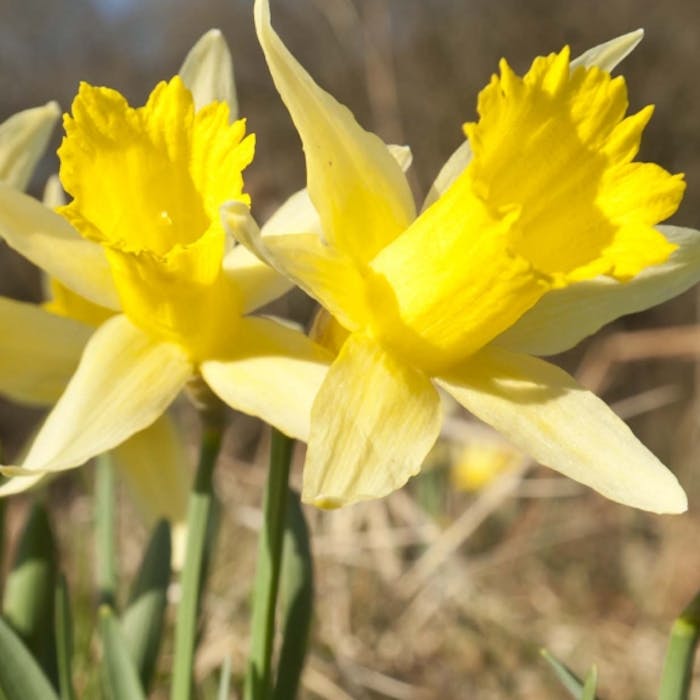
Daffodils, a bright British sign of Spring
Eternally associated with the poet Wordsworth, the daffodil is surely some carefully bred exotic species? But no, the well-known garden flower definitely belongs here, and has a native wild ancestor in the UK which is nearly as showy as the garden varieties.
The native daffodil (Narcissus pseudonarcissus) is found in damp woods, fields, grassland and orchards. It is smaller than horticultural varieties, with paler petals and a deep yellow trumpet-like tube. The leaves are grey-green, thin, long and flattened.
Once abundant and hand-picked for markets, this wildflower is now much rarer, having declined during the 19th century as a result of habitat loss. It can be seen in parts of south Devon, the Black Mountains in Wales, the Lake District, and along the Gloucestershire-Herefordshire border.
The ‘golden triangle' around the Gloucestershire villages of Newent and Dymock is famous for its wild woodland Daffodils. A 10-mile footpath known as ‘The Daffodil Way' runs through woods, orchards and meadows, in which the wild Daffodil is rarely out of sight. These colonies have built up over hundreds of years. Where it can still be found, it can be an impressive sight as it usually grows in groups.
The daffodil is also known as the 'Lent lily' or 'Easter lily' since it often blooms and fades within the Lenten period.
Daffodils, along with other Spring bulbs, are grown commercially as winter and spring flowers in a number of parts of Britain - notably in Cornwall and the Scilly Islands.
Further reading
Links to external websites are not maintained by Bite Sized Britain. They are provided to give users access to additional information. Bite Sized Britain is not responsible for the content of these external websites.
